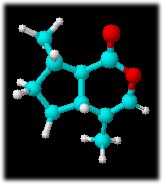Hydrogen is the most abundant element in the universe and as such is an attractive candidate for becoming a pollution-free fuel of the future. However, almost all the hydrogen we use is produced using highly polluting fossil fuels. Worse, storing and transporting hydrogen is difficult, hazardous, and costly.
An international collaboration between the Weizmann Institute of Science, the Swiss Federal Institute of Technology, the Paul Scherrer Institute in Switzerland, Institut de Science et de Genie des Materiaux et Procedes – Centre National de la Recherche Scientifique in France, and ScanArc Plasma Technologies AB in Sweden is hoping to develop a solar energy project with European Union funding to tackle the problems associated with hydrogen use by creating an easily storable intermediate energy source form from metal ore, such as zinc oxide.
By using concentrated sunlight, solar energy in other word, metal ore is heated to about 1,200 Celsius in a solar reactor over wood charcoal. this splits the ore, releases oxygen and creates zinc vapour, which is then condensed to a powder.
The final step involves reacting zinc powder with water to release hydrogen gas for use as fuel cell fuel. The by-product, zinc oxide, is simply recycled back to zinc in the solar plant.
In recent experiments, the 300-kilowatt installation produced 45 kilograms of zinc powder from zinc oxide in one hour, exceeding projected goals. Weizmann scientists are currently investigating metal ores other than zinc oxide, as well as additional materials that may be used for efficient conversion of sunlight into storable energy.
 Apparently, only 50% of cats respond to catnip. Catnip sensitivity is inherited, says Carolyn McDaniel, a veterinarian at the Feline Health Center at Cornell University in Ithaca, NY.
Apparently, only 50% of cats respond to catnip. Catnip sensitivity is inherited, says Carolyn McDaniel, a veterinarian at the Feline Health Center at Cornell University in Ithaca, NY.